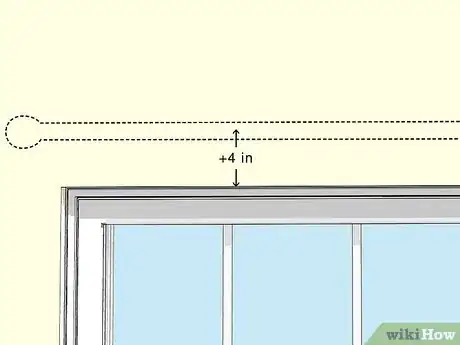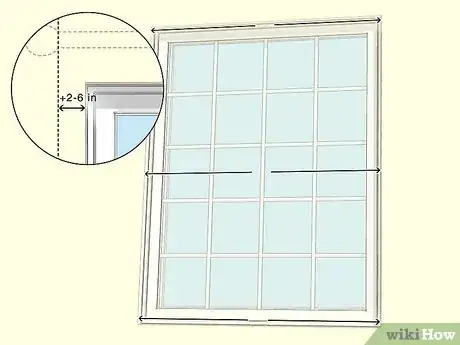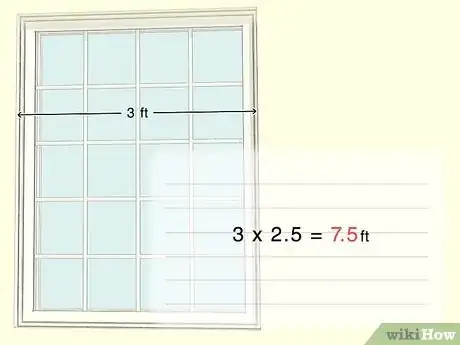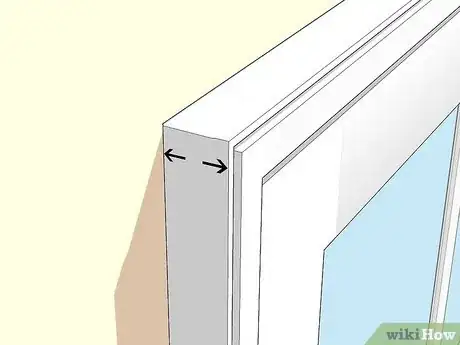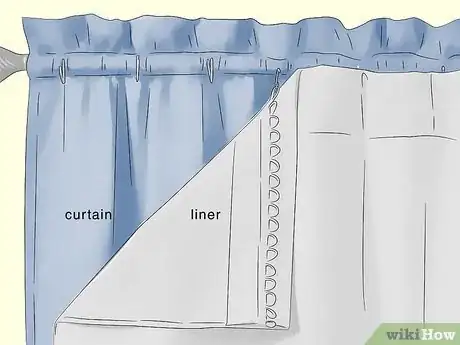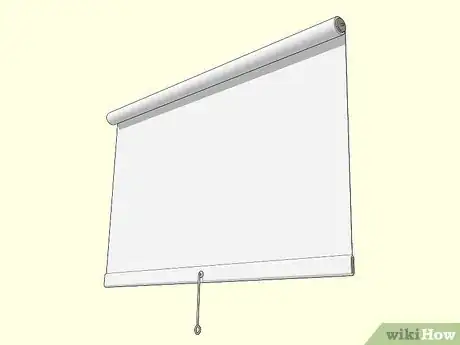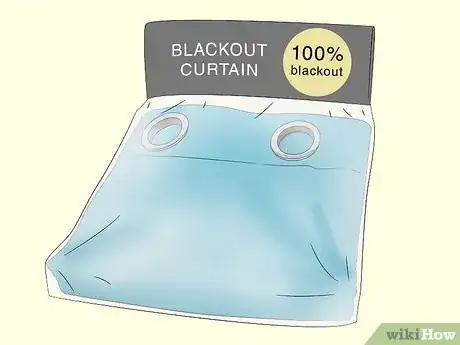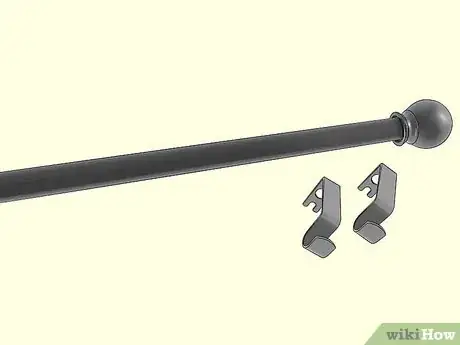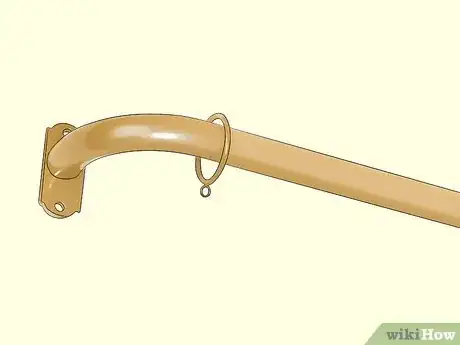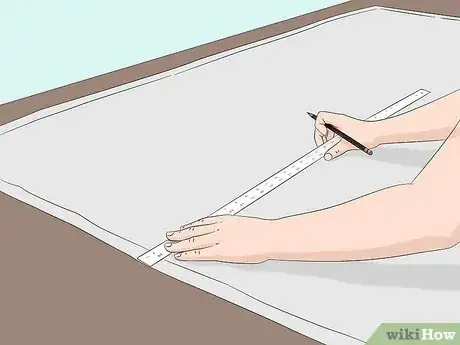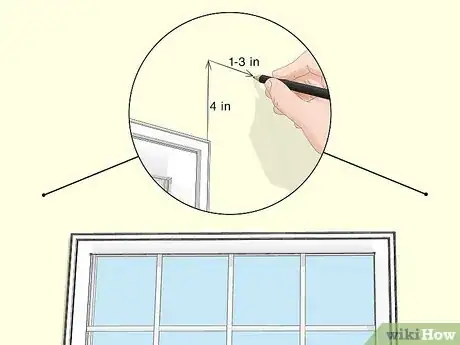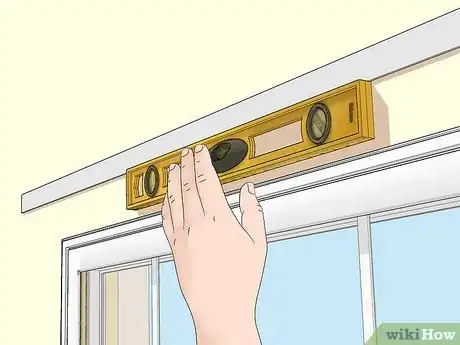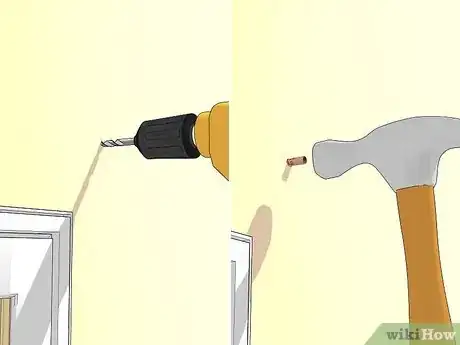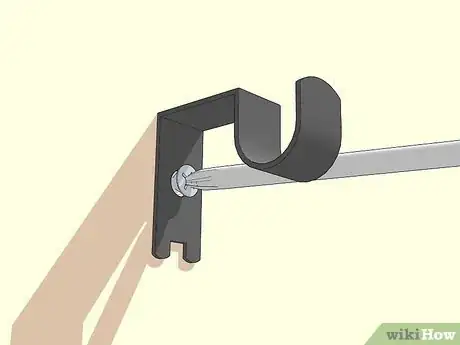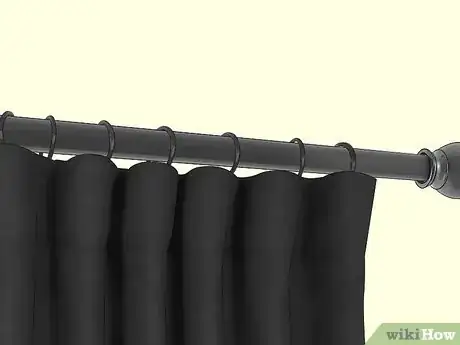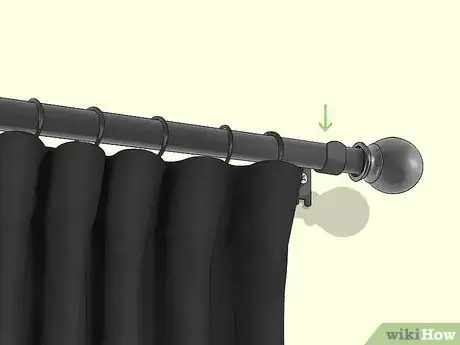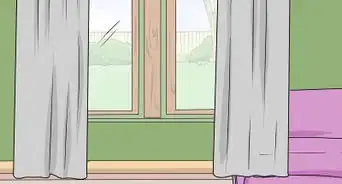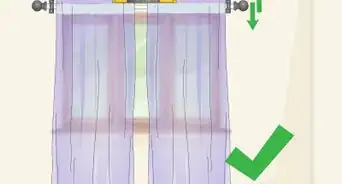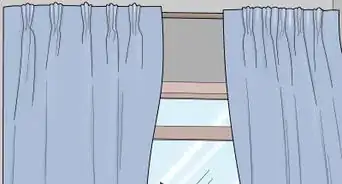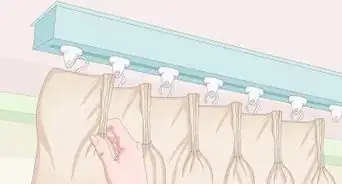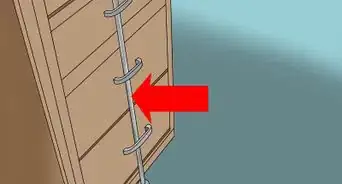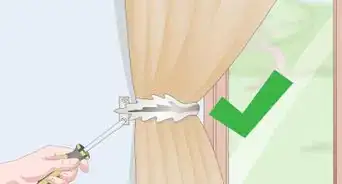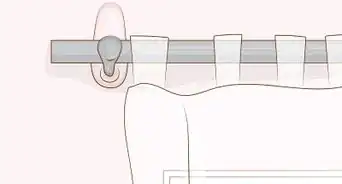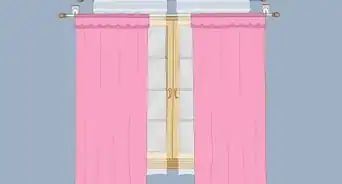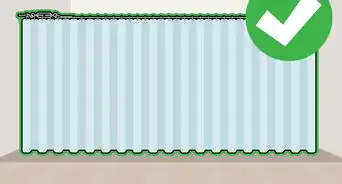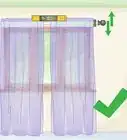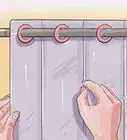This article was co-authored by Angelica Savard. Angelica Savard is a Home Stager, Realtor, and Interior Designer based in Long Beach, California. She is also the Co-owner of Elegant Domain Interiors LLC, a business that offers design consulting, home staging, and window treatments. She has over 15 years of interior design and consulting experience. She earned a BA from California State University Long Beach with an emphasis on Interior Architectural Design.
There are 12 references cited in this article, which can be found at the bottom of the page.
This article has been viewed 66,140 times.
Blackout curtains can be very useful for blocking out light when you are trying to sleep, especially for young children or shift workers who sleep during the day. Many major home decor suppliers carry blackout curtains, or you can make your own with blackout fabric and a little sewing skill. Measure your window frame, choose the product that suits your needs, and enjoy sleeping in peace![1]
Steps
Measuring Your Window
-
1Measure the length of your window frame.[2] Hook a tape measure on a top corner of your window frame and pull it down to the bottom edge of the frame. Then do the same on the other side and in the middle, in case your window is not perfectly square.[3]
- If you already have a curtain rod, you only need to measure from the curtain rod to where you want the curtains to end.
- If you do find that your window is a different length on 1 side, keep the longest measurement.
-
2Add 4 in (10 cm) if you are installing a curtain rod. Most curtain rods are hung at least 4 inches (10 cm) above the top of the window frame. You may want to hang yours even higher to give the illusion of height to your windows and make the room seem taller.[4]Advertisement
-
3Measure the width of your window frame. Take a tape measure and find the width of the top, middle, and bottom of your frame.[7] If the measurements are different, use the widest one.
- If you are installing a new curtain rod, you should plan to buy one that is at least 2 to 6 inches (5.1 to 15.2 cm) longer than the width of your frame.
-
4Multiply your frame’s width by 2.5. To make the blackout curtains more effective, and create a more attractive look, you will want your curtains to have plenty of depth. In order to have enough material for the curtains to fold over themselves several times, they should be at least 2.5 times as wide as your frame.[8]
- For instance, if your frame is 3 ft (0.91 m) wide, you will want curtains that are 7.5 ft (2.3 m) wide.
-
5Measure the depth of the frame if you are installing a new rod. To buy a curtain rod that extends far enough out from your window frame, you will need to know the depth of the frame. Use a tape measure or ruler to measure the distance from the wall to the point where your frame extends the farthest.[9]
Choosing the Right Products
-
1Buy blackout liners if you like the way your existing curtains look. If you already have curtains and just want to make them darker, you can purchase blackout liners instead of full curtains. These typically clip on to the inside of the curtains, or have holes that allow them to attach to your current curtain rings.[10]
- Make sure to get accurate measurements of your existing curtains before you buy liners.
-
2Get roller shades if you want to let light in during the day. If you want a room to be as dark as possible at night but still sunny during the day, you may want to buy a blackout roller shade instead of curtains. These shades are usually installed without a rod and can be easily rolled up when not in use.[11]
- You can hang sheer curtains on the same window to use during the day.
-
3Look for products that are labeled 100% blackout. If you want to block as much light as possible, make sure the curtains you buy are 100% blackout. If you just want to make a room slightly darker, however, you may prefer to use a lower percentage.[12]
-
4Choose blackout curtains in a dark color. Even light-colored curtains that are labeled as 100% blackout will not block light as well as dark-colored ones. Black curtains, or dark blue, grey, or brown, are ideal.[13]
-
5Buy a new curtain rod if yours is very thin. Blackout curtains tend to be heavier than regular curtains. Look at the curtain rods you currently have, and if they are very thin or bow slightly when you tug on the curtains, you may want to replace them with something sturdier.
-
6Get a return rod if you want to keep light from entering on the sides. If you are installing a new curtain rod with your blackout curtains, look for a return rod, or a wraparound rod. These rods have smooth corners on the ends that allow the curtain to slide all the way to the wall, which will prevent light from entering at the sides.[14]
-
7Make your own blackout curtains if you want to save money. Some fabric companies sell blackout curtain material by the yard. You can also just use a heavy material like velvet or wool, but it won’t be as effective. Buy enough fabric to fit the measurements you took and hem the edges.[15]
- To hang the curtain on your rod, make another hem along the top of the curtains that is large enough to slide the rod through.
- If you don’t like the look of the blackout fabric, you can buy another material as well and use this as the outside of the curtain.
Installing Your Blackout Curtains
-
1Mark a location for your curtain rod 4 in (10 cm) above the window frame.[16] Most curtain rods come with brackets that must be fastened to the wall so the rod can sit in them. Measure up 4 inches (10 cm) and out 1 to 3 inches (25 to 76 mm) on each side to find where your brackets should be placed, and mark it with a pencil.[17]
- Hold the brackets in place and mark where the holes for the screws are on the wall. You can also trace around the edge of the bracket for further reference.
-
2Use a level to make sure your marks are even. Once you have determined the placement of each bracket, take a long ruler or board and hold it up between the two marks. Place a level on top of the ruler to check if the two placements are even with each other.[18]
- If you find that they are not even, measure and mark again.
-
3Insert plastic wall anchors if your curtain rod came with them. Many curtain rods will come with hollow plastic pegs called wall anchors that can be driven into your wall to hold the screw. This helps keep the weight of the curtain from damaging the wall.
- Drill or nail a pilot hole in the place where the wall anchor will go. Make sure the hole is not larger than the anchor itself.[19]
- Use a hammer to gently tap the anchor into the pilot hole.
-
4Screw the curtain rod brackets into place. Once you have inserted the wall anchors, hold the brackets in place so that their holes line up with the wall anchors. Then use a drill to fasten the brackets to the wall with screws.
- If your curtain rod did not come with screws, make sure you use screws that are the same size as the wall anchors.
-
5Insert the curtain rod in the holes or rings of your new curtains. Your curtain most likely has either holes, rings, or a hem that the curtain rod can be slipped through. If it has rings, make sure all the rings are lined up in the same direction and not twisted.
-
6Hang the rod on the brackets. You may need to use a stepladder or chair to reach the brackets. Most rods rest on top of the brackets, although some may be inserted from the side, which will require collapsing and extending the rod to fit it between the brackets.
Things You’ll Need
- Tape measure
- Blackout curtains or liners
- Return curtain rod (optional)
- Pencil
- Level tool
- Drill
References
- ↑ Angelica Savard. Home Stager, Realtor, & Interior Designer. Expert Interview. 30 April 2020.
- ↑ Angelica Savard. Home Stager, Realtor, & Interior Designer. Expert Interview. 30 April 2020.
- ↑ https://www.bobvila.com/articles/how-to-install-curtain-rods/#.Wn5tSejwbIV
- ↑ http://www.womansday.com/home/decorating/a6411/how-to-hang-curtains/
- ↑ https://www.bobvila.com/articles/how-to-install-curtain-rods/#.Wn0vbujwbIU
- ↑ Angelica Savard. Home Stager, Realtor, & Interior Designer. Expert Interview. 30 April 2020.
- ↑ Angelica Savard. Home Stager, Realtor, & Interior Designer. Expert Interview. 30 April 2020.
- ↑ http://www.housebeautiful.com/home-remodeling/interior-designers/tips/a2819/hanging-curtains-mistakes/
- ↑ https://www.bhg.com/decorating/window-treatments/basics/how-to-hang-curtains/
- ↑ https://www.apartmenttherapy.com/sleep-better-with-blackout-curtains-sources-for-buying-making-them-203228
- ↑ https://www.apartmenttherapy.com/sleep-better-with-blackout-curtains-sources-for-buying-making-them-203228
- ↑ https://homesteady.com/info-8447952-do-blackout-curtains-work.html
- ↑ https://homesteady.com/info-8447952-do-blackout-curtains-work.html
- ↑ https://www.bobvila.com/articles/how-to-install-curtain-rods/#.Wn5zX-jwbIV
- ↑ https://www.makeit-loveit.com/make-your-curtains-blackout-curtains-simplified-version/
- ↑ Angelica Savard. Home Stager, Realtor, & Interior Designer. Expert Interview. 30 April 2020.
- ↑ https://www.bobvila.com/articles/how-to-install-curtain-rods/#.Wn0vbujwbIU
- ↑ https://www.bobvila.com/articles/how-to-install-curtain-rods/#.Wn0vbujwbIU
- ↑ http://womenyoushouldknow.net/fix-it-friday-anchors-aweigh-how-to-put-anchors-into-walls/
- ↑ https://homesteady.com/info-8447952-do-blackout-curtains-work.html


